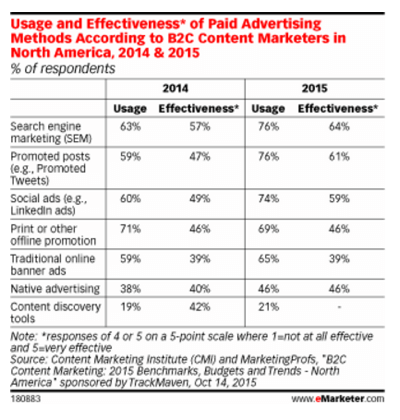
10 Social Media FAQs and Their Answers
If you’re just getting started with your brand’s social media marketing strategy, you probably have a lot of questions. To give you a helping hand, we’ve covered the 10 social media FAQs that are most likely to pop into your mind.
1. Which social media platforms should my brand be present on?
First things first, there’s no doubt that your business should be on social media, regardless of the industry. The purpose behind having a social media presence, however, may differ from one company to another. As a brand, you need to know where your audience is and start from there. Conveying messages to the wrong crowd will end up in a lot of dissatisfaction for all involved parties.
Bear in mind that some channels are focused on B2B, while others take a B2C approach. The decision depends on the product or service that you’re providing, as well as on your audience.
With that out of the way, the bare minimum includes an account on Facebook, Twitter and LinkedIn. The first two are meant for more light-hearted B2C updates, while the latter is mostly used for HR initiatives and B2B relationships. From here on, you can expand to Instagram, TikTok, Pinterest, YouTube, or others, depending on who you want to approach and with what purpose.
2. What should I post?
The answer to this question depends again on what your business does and what your demographic is. Each social media platform is enticing in its own way, but use the wrong type of content on the wrong audience and you’ll be labeled unprofessional.
All platforms support embeddable multimedia content and text descriptions, but on some it’s also acceptable to post text-only updates. Facebook and Twitter also support live video, which is something to keep in mind if your brand has a strong visual identity. TikTok and Instagram also put a lot of focus on the visual content, but these two platforms are worth considering only if you take the B2C road. Given the main purpose of LinkedIn, updates unrelated to professional life will be frowned upon.
To get a better idea of what works on each platform and why, take a look at one of our eBooks, The Psychology of Social Media Marketing.
3. Is it OK to post the same content on each platform every day? Or should we post different updates on different sites?
In short: no. People follow your brand on different platforms for different reasons. This means that you can’t expect to have exactly the same audience across all platforms. That being said, unifying the audience is something you can achieve through storytelling. We’ve discussed this in our Snapchat vs. Instagram comparison. Brands focusing on visual content don’t necessarily have to rely only on one of the two platforms. Instead, they could start a story by posting the “making of” on Snapchat and the more polished photos on Instagram.
4. How Do I Get More Followers?
Here’s where the difference between quality and quantity becomes obvious. Posting frequent updates where you’re asking people to follow you or to bring in more followers is obviously not going to work. Buying followers might sound like an enticing solution, but it’s not a viable one. Paid followers aren’t particularly known for engaging with content, and neither are they loyal.
You can drive engagement by delivering high-quality content to the right people at the right time. Creative and unique content will more than just that. It can also determine your followers to share it with their family members, friends or professional contacts. If this turns into a snowball you can’t stop from rolling (not that you’d want to), your content has gone viral. Read more on how to use 5 ingredients for engaging visual content marketing campaigns.
5. How to handle negative comments on social media?
Some brands have this common misconception that social media is a place full of negativity. Even if it were so, it’s better to know that there is a place where customers express all sorts of opinions, rather than being oblivious. When it comes to handling this type of comments, you only have two options.
First of all, you can choose to address your customers’ concerns in an attempt to regain their trust. Bear in mind that in some cases there can be no retention if you’re not doing so. Even satisfied customers will start questioning your customer service standards if they notice such approaches.
Secondly, you can turn to the content moderation solutions provided by the social media platforms. Facebook and Instagram are only two of the social networks that provide comment filtering options.
6. What’s the right frequency if people keep missing the stuff we post on social media?
The best frequency really is something that you need to figure out on your own. Something you need to take into account is how active your audience is. After doing so, you have to find a balance that the audience is comfortable with. You definitely don’t want them to start unfollowing you after flooding their newsfeeds. Neither do you want them to ask themselves if you’ve fallen off the face of the Earth. There are some guidelines, but you can only find the best frequency by experimenting.
7. Is Paid Social Media Advertising a Good Idea?
If you’re having a hard time raising awareness for your products or services, social media advertising might be the best option you have. You shouldn’t rely on this approach every time you post an update, but boosting updates every now and then could have a major impact.
Research conducted by eMarketer at the end of 2015 concluded that 76% of B2C respondents relied on promoted posts and only 61% of these users believed that paid ads are effective. Out of the 74% of those surveyed claimed to use LinkedIn, Facebook and Twitter for their efforts. In addition, 59% of respondents rated these three networks with 4 or 5 out of 5 points for effectiveness.
Things don’t look so good in the B2B department, where less than 50% of social marketers believe paid ads to be effective. To make sure you’re not throwing money out of the window, make sure the platform you choose for is the one your ideal audience spends the most time on.

8. How to measure ROI in Social Media?
After selecting the right platforms and planning the campaigns, you should decide what metrics to check in order to determine the ROI. In one of our posts on this topic, we’ve discussed reach, traffic, engagement and conversions on social media, and why each of them is important for measuring return on investment.
Social Media ROI = (Return from social media – cost of social media marketing) / cost of social media marketing
Using the above formula you can determine how the results compare to the initial goals. It’s best to look at as many metrics as possible, in order to ensure that any changes are minor.
9. Can I carry over a social strategy from one platform to the next?
Content often dictates the type of strategy you need to adopt. As different social media platforms focus on different types of content, the chances of successfully carrying a strategy from one to another are slim.
There’s platform-specific content, and then there are platform-specific constraints. For a long time, Twitter has had the 140-character limit in place, and the only way to transmit more was to embed an image. Facebook, LinkedIn, and Instagram are far more liberal from this perspective. Even if you decide to cross-post content on these 3 platforms, you need to remember that the audiences might differ.
10. What common social media marketing mistakes should my business avoid?
Spamming, having multiple profiles on each platform and not interacting at all with the audience are some of the practices you should steer clear of. Some of these actions cause confusion, while others will determine your audience to downright unfollow and/or even report you.
Inconsistency is one of the main traps you could fall into. That could mean starting on a platform and abandoning it just to try another one. It could also mean publishing updates in a frantic manner. Putting some logic into how, when and where you post the social media posts could tighten the relationship with your audience. If not for anything else, your audience could learn when to expect your updates.
A social media management platform could help you become more consistent. At the same time, it could help you keep track of engagement and other relevant metrics. Give Swat.io a try and see how it covers your needs.
Any Other Social Media FAQs You Can Think Of?
What are your social media questions we can help you with? As the complexity of each platform grows, so does the number of questions social media managers ask. Please leave them in the comments section below and we’ll provide an answer as soon as possible.
 Published: 05. September 2019
Published: 05. September 2019  Updated: 21. June 2022
Updated: 21. June 2022 









I am really worried about negative comments on social media. Thank for give right tips for this… pleas visit this http://seekerswiki.com/